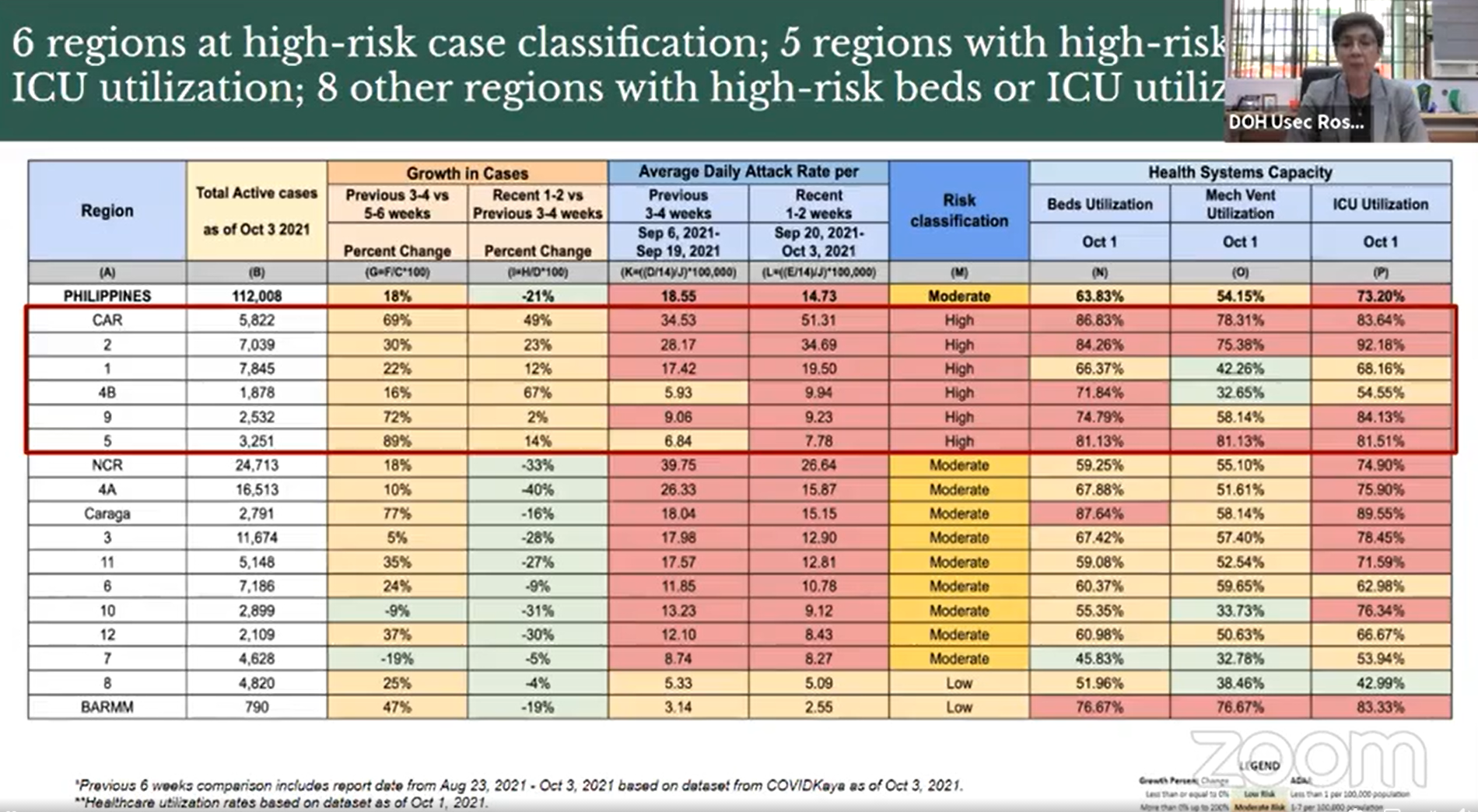The COVID-19 risk classification of the country and the National Capital Region (NCR) remains at moderate level, according to the Department of Health (DOH).
Latest DOH data showed that the country’s COVID-19 two-week growth rate (2WGR) as of Oct. 3 is -21%, with an average daily attack rate (ADAR) of 14.73 per 100,000 population from Sept. 20 to Oct. 3.

Metro Manila also recorded a -33% 2WGR and 26.64 per 100,000 population ADAR. However, the intensive care unit (ICU) utilization for the country and NCR remains at high risk, or at 73.20% and 74.90%, respectively.
The DOH said it is still monitoring the situation of hospital beds nationwide, noting that the nationwide COVID-19 bed utilization as of Oct. 1 is at 63.83%, while NCR’s occupancy is at 59.25%.
Based on OCTA Research Group’s data, Metro Manila’s reproduction number has declined to 0.81 as of Oct. 4, while its positivity rate was recorded at 16% in the past seven days.
DOH Undersecretary Maria Rosario Vergeire said in the DOH briefing that the decline in numbers must be carefully interpreted due to the reported decrease in laboratory testing output of 14 regions.
“Mayroong areas talaga na ‘di sila nakaka-receive ng maraming testing ngayon. ‘Yung ibang areas naman apektado dahil nagbaba ng testing capacity itong ating laboratoryo katulad ng RITM,” she said.
“Mayroong iba, nagkumpirma sila na they are using antigen test and more than the RT-PCR,” she added.
This was also brought up by DOH Epidemiology Bureau Dir. Alethea De Guzman in the Oct. 4 Laging Handa briefing.
“Gusto nating higit na maintindihan kung ito’y tunay na pagbaba dahil kaunti na lang ang kaso… o baka may epekto rito ang paglipat sa antigen testing at ang pagrereport ng antigen tests sa DOH,” she said.
In NCR, the testing output of Caloocan, Pasig, Pateros, Mandaluyong, Parañaque and Pasay declined in the past two weeks.
Alert level system outside NCR
The health department said it is still gathering more data before deciding whether the pilot implementation of the policy shift will be expanded to other regions.
“Kung makikita natin na ito talaga ay kasing ganda or even have better results than our wide scale and very restrictive lockdowns, then that will enable us to make that recommendation na mai-rollout siya to non-NCR areas,” De Guzman said.
The DOH said the Cordillera Administrative Region (CAR), Regions 2, 1, 4B, 9, and 5 remain under high risk case classification, with moderate to high ICU utilization.
Both case and health systems capacity are used as bases for imposing alert levels and quarantine classifications. De Guzman said the recent technical issues in the COVID Kaya system did not have any impact on their trend analysis.
Meanwhile, health authorities reported that 21 Delta variant cases were detected from “retrospective” samples collected between April and June. – Report from Mark Fetalco/AG-rir
Watch report here:
